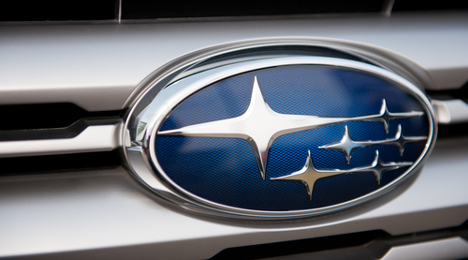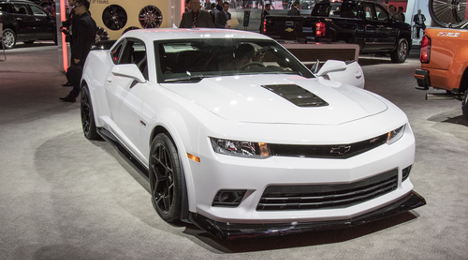Enterprise Holdings announced its newest five-year goals for its businesses on Monday, included in its fiscal year 2015 sustainability report.
Within the report, titled The Business of Sustainability, the operators of well-known companies such as Enterprise Rent-A-Car, National Car Rental and Alamo Rent A Car built on their last five years of sustainability results and set new goals through its 2020 fiscal year.
"These new goals reflect a fresh look at our priorities based on conversations with our many stakeholders and leadership teams," said Pam Nicholson, president and chief executive officer at Enterprise Holdings.
The goals Enterprise Holdings listed include the following:
- Waste: Reduce companywide paper use 40 percent by FY 2020.
- Greenhouse Gas Emissions (GHG): Reduce Scope 1 (direct GHG from owned operations) and Scope 2 (indirect GHG from consumption of purchased electricity, heat and/or steam) greenhouse gas emissions 10 percent by FY 2020.
- Energy: Reduce annual direct and indirect energy use and related costs, compared to the previous year.
- Water: Reduce annual water use (per vehicle wash), compared to the previous year.
- Workforce Development: Continue investing in the workplace by providing an average of at least three days' professional development annually per full-time management employee, and also encouraging all employees to attend relevant company sessions, events, programs and forums.
"We still firmly believe providing long-term benefits and seamless solutions to customers, partners and communities is the key to sustainability in the transportation and travel sector," said Brad Carr, vice president of corporate business development for Enterprise Holdings. "However, we're also seeing more and more contract-related questions about top-line sustainability issues. That means we work to help organizations better understand the long-term impact of corporate travel in terms of cost, plus environmental considerations, efficiency and duty of care."
Looking back at the 2010-2015 fiscal years, Enterprise Holdings listed the following achievements in the area of sustainability:
- Energy: Reduced natural gas consumption 14.8 percent and cut electricity use 19.1 percent, compared with FY 2010 baseline. Figures have been calculated using same-store and weather-normalized data (excluding new locations and branch offices where an external landlord is responsible for utility bills).
- Greenhouse Gas Emissions (GHG): Achieved a 10.1 reduction in Scope 1 emissions and a 31.2 percent reduction in Scope 2 emissions since FY 2010. Combined, Enterprise Holdings reduced its GHG emissions intensity 18.6 percent.
- Alternative-Fuel Shuttle Buses: Converted 98 percent of airport shuttle buses to biodiesel, synthetic diesel, compressed natural gas or hybrid models since FY 2010.
- Enterprise Sustainable Construction Protocol (ESCP) Guidelines: Invested more than $150 million, including thousands of new and retrofitted construction projects, since FY 2010.
- Product Lifecycle: Recycled 1.4 million gallons of oil and more than 1 million oil filters for its fleet last year, representing 95 percent of the oil and virtually all of the filters used in its North American service centers.
To learn more about Enterprise Holdings’ sustainability values, click here.
The battle between supply and demand is nothing new to dealers — and as we head further into the forecasted growth in used-vehicle supply, wholesale price softening is to be expected.
The latter is the message from ADESA Analytical Services’ executive vice president and chief economist Tom Kontos in the December edition of Kontos Kommentary, where he summed up the year quite succinctly and set the scene for 2016.
“2015 was largely a year when strong retail used vehicle and CPO demand, benign new-vehicle incentive activity, and the embrace of upstream as well as traditional auction processes among remarketers diluted the usual negative impact of growing supply on wholesale values,” Kontos said in the report.
“Further masking that impact was the displacement of off-rental program vehicle volume that appeared in the first half of the year rather than the last quarter of 2014,” he added. “These high-dollar, late-model units biased average wholesale prices upward for much of the year.”
Unfortunately, that dilution of wholesale values started to clear up by the end of the year, most notably in December, where Kontos says prices fell by upwards of 1 percent on both a month-over-month and year-over-year basis for various segments.
Let’s break it down. Wholesale used-vehicle prices in December averaged in at $9,763, a decrease of 1.2 percent month-over-month and down 1.0 percent relative to December 2014.
The only vehicle segment that showed any significant monthly increase was the minivan segment, while truck values, in general, declined less than cars and crossovers.
Looking at the various types of sellers, wholesale prices for vehicles remarketed by manufacturers were up 1.6 percent month-over-month but down 3.5 percent year-over-year. For fleet/lease consignors, both metrics were down 0.1 percent and 0.7 percent, respectively.
Within the fleet/lease consignment category, off-rental risk units showed small month-over-month and year-over-year price increases.
Three-year-old vehicles, however, did not, Kontos said. These vehicles — which he said are a “proxy for off-lease vehicles” — showed significant declines in both pricing metrics.
Dealer consignment saw a 2-percent decrease in December, compared to November, and a 1.2-percent decreased compared to December 2014.
To check out Kontos’ full breakdown of wholesale used-vehicle prices by vehicle model class, click here.
Everyone who has been in the car sales business since the dawn of the Internet age will probably agree that, well, things are a lot different than they used to be.
Customers are more informed. There are a lot more ways to sell a vehicle. But as the old adage goes, as things change, many stay the same.
That was one important message shared by Rick Ricart, the vice president of sales and marketing at the Ricart Automotive Group and third-generation car salesman.
When recently speaking with Ricart, Auto Remarketing asked him how he has seen the business change over the course of his lifetime, more than three decades of which which he has spent in the car industry.
“Since I’ve been in business, it’s a lot less forgiving … I think of the old adage of, ‘a used car bought right was already 50 percent sold.’ And today, if the right used car is bought right and merchandized correctly, it’s 85 percent sold,” he said. “The other 15 percent is just not making the customer want to leave.”
And, for the most part, many salesman can probably agree. By the time they reach the dealership, the average customer is much more informed about their purchase than they were prior to the digital information age. More often than not, a customer knows more about a specific vehicle than the average salesman who has to know about a wide variety of vehicles. Which is what lead to Ricart’s policy of not allowing sales staff to “sell cars,” but instead “allow customers to buy a car.”
Referencing the sales strategies of companies like Carvana and Vroom, Ricart thinks that although these types of niche businesses have the potential to steal some business from traditional dealerships, they also give dealerships an opportunity to adapt to the new ways customers want to buy cars.
“I think as people get more comfortable and the word of mouth spreads that there are alternative ways to buy a car, we’re going to see a bit of an impact. I mean, eBay came on the scene, and I think by 2007, they were the No. 1 used-car seller in the world,” he said. “Well, okay, they’re No. 1 in the world, but they haven’t affected us at all. So there’s such a big market for selling used cars, I think it’s OK to have some of these niche and segmented ways of buying.
“I think from a dealership perspective, we just have to adapt to be able to fit all of those different buyers’ bolts. And if you’ve got a certain buyer in your market that wants to buy a car online, a la Amazon style, you need to be able to cater to that customer,” he said.
“Be able to provide all of that information electronically. Be able to communicate, negotiate, short of doing the actual transaction. Do it all online. Be open and honest. And understand the more open, the more honest, the more accurate we are with that consumer, the greater the chance they’re going to come in and finalize the business with you,” Ricart added.
To learn more about Rick Ricart and his family’s three generations of business that built today’s Ricart Automotive Group, be sure to check out Auto Remarketing’s upcoming “Leading Dealer Groups” issue, coming out in print and online this month.
At the close of the third quarter, our nation’s seven publicly traded dealer groups collectively averaged their 25th consecutive quarter of same-store used unit sales increases.
Cox Automotive’s chief economist Tom Webb, speaking during the Manheim Index Quarterly Conference Call on Friday, says a 26th is probable, but will be a challenge to achieve.
“Slide 14 shows the seven publicly trade dealership groups and it shows that they have had 25 consecutive quarters of same-store growth in used-units retailed,” Webb said, referring to slides accompanying his presentation. “Achieving the 26th quarter will be a little bit difficult because CarMax has already reported a 0.8-percent decline in their quarter, which ends in November.
“But I still think the 26th quarter will be achieved because CarMax was more focused on supporting gross than I believe that the others will be. Which, obviously, writes in the equation, that by extension, I expect the downward sloping lines in Slide 15 will also continue.”
And the latter slide, as you probably inferred, references the used-vehicle retail gross margin for the same publicly traded dealer groups. The gross margins for used sales for the public groups is currently trending to its lowest percentage in several years — a trend Webb says has two faces.
“Now, there are two ways of looking at that gross margin trend. One could just say it’s plain ugly, and it’s dangerous,” he said. “Or, you can argue that it’s just simply the case of a competitive industry passing on its efficiency savings to the consumer. Obviously the truth lies somewhere between the two.
“But more importantly, from my perspective, I do not believe that grosses should, and hopefully they won’t, go much lower. So that means don’t look for operating efficiencies at the retail level to continue to bail out the commercial consignors. The dealers have done more than their part,” Webb said.
He says dealership proficiencies have helped that margin decline due to the lowered costs of operation that result from such efficiencies.
“A lot of that reduction in gross, I wouldn’t say was ‘willingly’ given away, but because there were tremendous increases in operation efficiencies, other dealers were able to give it away,” Webb said. “The ability to keep achieving those operating efficiencies I think are a little bit limited going forward. And certainly the benefit of exceptional growth in the throughput has probably slowed it a little bit, too.”
For more takes on Webb’s analysis, including the used-car market’s current stretch of wholesale price stability, click here.
Subaru and Ford are on top of two loyalty rankings released by Experian Automotive on Tuesday, while the ranking of individual model loyalty was dominated by luxury vehicles.
According to Experian’s analysis of roughly 6.8 million household repurchases that put pen to paper between October 2014 and September 2015, Subaru and Ford ranked highest, first and second, respectively, in both brand loyalty and manufacturer loyalty.
Looking at individual models, Land Rover’s Range Rover was the model with the most repeat buyers (48.2 percent).
As an overall manufacturer, Toyota ranked third-highest in customer loyalty — but on a brand level, Mercedes-Benz was the third-highest overall in brand loyalty while also ranking first in the luxury brand rankings.
“It’s exciting to see that manufacturers’ efforts to improve owner loyalty are working,” said Brad Smith, director of automotive statistics and consulting at Experian. “Over the last few years, loyalty rates have increased, and these improvements are key to the industry. Understanding rates of consumer loyalty among vehicle brands, makes and models helps to drive better business decisions, such as a dealer selecting inventory and targeting advertising or a manufacturer making adjustments to a vehicle’s design and creating more competitive promotional strategies.”
Here are the top 10 loyalty rankings for each metric, provided by Experian:
Manufacturer Loyalty Top 10
| Manufacturer |
Loyalty Rate (%) |
| Subaru |
67.7 |
| Ford |
67.5 |
| Toyota |
67.3 |
| General Motors |
67.2 |
| Fiat Chrysler |
65.5 |
| Daimler |
64.9 |
| Kia |
63.2 |
| Honda |
61.3 |
| Hyundai |
61.3 |
| Nissan |
61.2 |
Overall Brand Loyalty Top 10
| Brand |
Loyalty Rate (%) |
| Subaru |
67.7 |
| Ford |
66.7 |
| Mercedes-Benz |
65.1 |
| Toyota |
63.5 |
| Kia |
63.2 |
| Hyundai |
61.3 |
| Nissan |
61.1 |
| Chevrolet |
60.7 |
| Lexus |
60.7 |
| Honda |
59.9 |
Luxury Brand Loyalty Top 10
| Brand |
Loyalty Rate (%) |
| Mercedes-Benz |
65.1 |
| Lexus |
60.7 |
| BMW |
57.4 |
| Porsche |
57.2 |
| Lincoln |
57 |
| Audi |
54.7 |
| Land Rover |
51.6 |
| Cadillac |
49.2 |
| Infiniti |
45.7 |
| Acura |
43.8 |
Model Loyalty Top 10
| Model |
Loyalty Rate (%) |
| Land Rover Range Rover |
48.2 |
| Mercedes-Benz S Class |
46.6 |
| Lincoln MKZ |
44.8 |
| Mercedes-Benz 2500 Sprinter Van |
44.8 |
| Nissan Leaf |
44 |
| Ram 1500 |
42.9 |
| Lexus RX 350 |
42.7 |
| Hyundai Genesis |
42.5 |
| Kia Soul |
42 |
| Subaru Forester |
41.1 |
Some other interesting facts found by Experian’s study include the following:
- North Dakota is the state with the most brand-loyal customers (67.2 percent), followed by Michigan (66.4 percent) and Iowa (65.8).
- 69 percent of lease customers stayed loyal to their brands during the timeframe of Experian’s study, followed by 56.9 percent of consumers with loans.
- Customers who finances with manufacturer captive finance companies (Ford Credit, Toyota Financial, etc.) were more loyal (63.8 percent purchased same brand again) compared to customers with independent bank loans (58 percent).
Citing historical trends, NADA Used Car Guide points out that November saw an easing in used-vehicle depreciation, staying the course for the typical seasonal pattern of the industry. November’s depreciation – 1.9 percent – was noticeably lower than October’s 2.7-percent drop.
In the December edition of Guidelines, NADA UCG’s seasonally adjusted used-vehicle price index rose 1 percent compared to last month, to 123.8. Year-to-date, the index falls just 0.2 percent shy of the index’s all-time high averaged last year.
"It's normal for used-vehicle depreciation to slow during the end of the year,” Jonathan Banks, NADA UCG’s executive analyst, said in the analysis. “That said, while the slow is normal for the month, it was steeper than last November's 1-percent slide."
Diving a bit deeper, compact cars saw the biggest hit last month, falling by an industry high 2.7 percent in November, continuing its trend of dropping roughly 3 percent each month for the last seven.
While depreciation for the industry, as a whole, stood at 13.2 percent YTD at the end of November (compared to 12.7 percent for 2014), let’s take a look at all of the segments’ price drops last month, according to NADA UCG:
Change in Wholesale Used-Vehicle Prices – Oct. vs. Nov. 2015
| Segment |
Price Drop Percentage (all values negative) |
| Compact Car |
(2.7) |
| Large Car |
(2.3)
|
| Subcompact Car |
(2.1) |
| Luxury Mid-Size Car |
(2.1) |
| Luxury Compact Car |
(2.0) |
| Industry Average |
(1.9) |
| Mid-Size Van |
(1.9) |
| Luxury Mid-Size Utility |
(1.7) |
| Luxury Compact Utility |
(1.6) |
| Large Pickup |
(1.6) |
| Mid-Size Utility |
(1.6) |
| Compact Utility |
(1.4) |
| Mid-Size Car |
(1.4) |
| Mid-Size Pickup |
(1.1) |
| Luxury Large Car |
(1.1) |
| Large SUV |
(0.8) |
Year-to-date auction volume, by the end of November, stood at 3.83 million units, up 4 percent compared to the same period last year.
Looking forward, NADA UCG predicts that the prices for used vehicles aged zero to 8 years will fall roughly 1 percent in December compared to November. Zooming in to the segment level, the organization also predicts that subcompact and compact cars will drop by 1 percent, more than any other mainstream segment, while both luxury cars and utilities are expected to lose 1 to 1.5 percent in December.
January prices are expected to remain flat before increasing approximately 0.5 percent in February.
Stress-testing has had a profound effect on risk management practices within banks. In the wake of the global financial crisis, regulators around the world instituted policies designed to substantially remove the possibility of large-scale bank failures.
Capital reserves at banks have been appreciably raised, and regulators are applying a considerably greater amount of scrutiny to the way banks monitor and predict risk.
Although stress-testing is a young discipline and will surely change radically over the next decade, the procedures being put in place hold the potential to transform the way financial institutions around the world are managed.
In the form implemented by U.S. regulators, stress-testing involves trying to infer the likely performance of a portfolio assuming that a specific, dire macroeconomic scenario starts to unfold.
Most large banks have active auto loan portfolios. Therefore, a great deal of effort has been applied to the problem of stress-testing default probabilities, credit losses, loan recovery rates, lending volumes, and revenues associated with the management of auto portfolios.
Leases, although rarer in the banking industry, have also demanded increased analytical scrutiny. The shift into leasing has added residual forecasting and return rate probability to the mix of factors to be stress-tested by the auto industry.
The purpose of this article is to consider some of the lessons learned from research conducted to stress-test bank auto portfolios. This is not meant to be a general discussion of stress-testing, per se, but a summary of some elements that are quite unique to the world of auto finance. Auto loans and leases, like mortgages, are secured by collateral.
Unlike property, however, autos are mass produced, depreciating products with a relatively short life span. These features change the way auto loans and leases behave in the context of a downside macroeconomic event.
This article will set out by considering, at a high level, how auto loans tend to perform in recessions. Data for the 2001 and 2008-2009 events will be compared and contrasted with a view toward trying to predict how auto portfolios might be expected to behave in a future recession.
We will consider as part of this discussion the effect of fiscal stimulus packages such as cash for clunkers and whether the auto industry could expect a repeat performance in future recessions. We will conclude by asking whether a subprime-mortgage style crisis could conceivably affect the future auto industry.
Pro and counter cyclicality
The 2001 and 2008-2009 recessions were different beasts. The 2001 event was tamer, having its origins in the dot-com bust and 9/11; the Great Recession was triggered by a banking sector crisis, the likes of which had not been seen since the 1930s. The auto sector, it is safe to say, was not a proximate cause of either event.
The performance of the new-car industry was markedly different in each event. Coming into the 2001 recession, new-car sales were climbing steadily, reaching a peak of close to 19 million annualized units around the turn of the millennium.
As the recession started to bite, generous incentive packages offered to customers, coupled with a strong “nesting” instinct in the wake of 9/11, acted to keep unit sales of new vehicles relatively high. If new-car sales were the only economic indicator you considered, you would be unaware that the 2001 recession even happened.
The Great Recession, by way of contrast, saw new-car sales crater. In early 2009, during the immediate aftermath of the Lehman Brothers collapse, monthly sales fell to around 9 million annualized, barely half the precrisis level. Some attribute the sales decline to problems at GM and Chrysler, and these events certainly did not mitigate against the dire impact of the recession.
It can be noted, though, that unaffected manufacturers also suffered steep reductions in sales. It is fair to say that Toyota and Ford could have sold more to unsatiated GM customers had the demand for their vehicles actually been present in the economy. The new-car industry has been fighting back over the past six years but it took until 2014 before pre-Great Recession sales numbers were observed once more.
Although consumers continued to refresh their vehicles during the 2001 recession, foregoing things such as vacations and international travel for a nicer ride, Great Recession consumers clearly opted to delay the purchase of new or newer vehicles. This had a decidedly negative, deep impact on auto manufacturers and new-car dealers.
For financiers, meanwhile, the recession was a relatively mild, short-lived event. By early 2010, auto default rates were already at prerecession levels.
Recoveries on those loans that were in default were low because used-vehicle prices were rising at breakneck speed. At least one bank in the knowledge of the present author saw recoveries exceed gross credit losses during the latter days of the Great Recession.
It behooves us to ask why the recession was so mild and short for some auto financiers.
The fact that the 2008-2009 recession started in mortgage was, in a roundabout way, a positive for the auto finance industry. With house prices falling rapidly in most parts of the country, consumers’ normal resilience in paying their mortgage through tough times crumbled rapidly.
If we consider delinquency rates on mortgages, car loans and credit cards it becomes immediately clear that, prior to 2009, mortgages consistently had the lowest rate of nonpayment, followed by auto and credit cards in third place.
The subprime crisis led to a huge rise in mortgage delinquency and default, to the point where, by far, mortgage was the most defaulted form of consumer loan (in terms of percent of dollar volume outstanding) by late 2009. With house prices falling, troubled consumers overwhelmingly decided to favor the car loan over the house. You would get terrible gas mileage if you ever tried to drive the house to work.
It turns out that if home foreclosure ever becomes inevitable, it gives consumers an unexpected source of disposable income that can be applied to other loans.
It is a fairly callous form of accounting, but a missed $1,600 mortgage payment represents four $400 car payments or 16 $100 credit card installments for a troubled mortgagee.
The second relevant point is that the decline in new-car sales in late 2008 and early 2009 inevitably led to a dearth of used-car supply in early 2010. This phenomenon is well known in the auto industry, though our view is that the time lapse between new-car sales and the used-car price surge is a fair bit shorter than the view commonly held in the industry. If the dominant form of transaction, for example, is a three-year lease, it might be reasonable to expect the gap between these events to be about 36 months.
The empirical data, however, show that new-car sales lead used-car prices by around 12 to 18 months; this pattern has been consistent over the past few decades. These supply dynamics are overwhelmingly responsible for the surging used-car prices seen in 2010 and the thin losses observed by many in the auto finance sector during the same period.
In a hypothetical future recession, new-car sales is the key variable to track. If sales remain aloft during the recession, financiers and remarketers should brace for a period of low used-car prices about a year after the onset of recession.
If new-car sales crater, however, the industry can take succor in the fact that used-vehicle supply will contract, and prices will rise, thus cushioning the back end of the recessionary period.
Fiscal policy
A short side note relates to the issue of fiscal stimulus during a recession. Whether or not you agree with the concept of the government taking on the role of “spender of last resort” during a deep recession, it is still valid to consider the appropriate form of stimulus should such an intervention ever be deemed necessary.
During the last recession, the auto industry was supported by bailouts of GM and Chrysler and by the $3 billion cash four clunkers scheme that triggered some to update their ancient vehicles during the deepest part of the recession.
The empirical evidence on the success of cash for clunkers is thin. A cynical analyst could line up the 2009 scheme and the 2010 price surge and say that X caused Y.
A less cynical, data-driven person certainly could not reject this assertion; future empiricists may be able to weigh in on the issue of exactly how much of the 2010 price surge was due to cash for clunkers market activity. Equally certainly, we can say that the scheme did not hurt used-car price dynamics during this time.
The Chrysler and GM bailouts were certainly positive for auto industry employment during the recession, though the longer-term effects of the bailouts will likely be highly negative.
Our view is that if fiscal stimulus is to be enacted, the auto industry is an excellent candidate for support. Car use is close to universal in the U.S., and the auto sector employs many millions of Americans across an enormous range of household income levels.
It is difficult to find other industries with better stimulus credentials in terms of progressivity or heavy employment concentration.
The next time recession looms therefore, assuming pro-stimulus legislators are in place, it is completely reasonable to believe that stimulus funds will flow in the direction of the auto sector.
Can it happen to us?
The discussion until now has focused on the effects of externally triggered recessions on the auto industry. History shows that recessions are caused by structural imbalances or bubbles in key sectors of the economy and that economic pain is highest in the sector where the imbalances first appeared. It would therefore be prudent of us to consider the likelihood that the auto industry will be the root cause of the next recession.
As mentioned already, the auto industry is certainly big enough to cause the U.S. economy to topple. Some banks are exposed to auto portfolios that are consequential enough to trigger bank failure. The auto sector, like the mortgage industry, uses securitization in high volume; it was these forces that many blame for the subprime crisis that triggered the Great Recession.
Despite the presence of these preconditions, our view is that an auto-induced recession is highly improbable. One of the commonalities observed in previous financial recessions was the existence of speculative asset price bubbles.
During the 2005-2006 housing boom, for instance, many individuals and companies were buying real estate with zero yield on the expectation of reaping capital gains upon sale of the asset.
House prices, after all, never, ever fall! At a basic level, this form of psycho-pathology is not plausible in the auto sector.
Although it is true that some highly specialized companies exist to arbitrage minor market inconsistencies, most sane people do not expect to make a profit when buying and selling used vehicles unless they happen to be auto dealers. Cars are mass-produced, depreciating assets that do not lend themselves to speculation regarding potential capital gains.
Some may argue that speculation is possible by people operating within the world of asset-backed securities. This is true, but only up to a point.
Someone analyzing a securitized deal could quite easily and accurately determine a theoretical maximum value of the collateral that cannot be breached under any sensible circumstances. If an investor were to pay such a price, or anything remotely similar, they would cease to be investors after a short time.
Given the size of the industry, one does not want to completely rule out the possibility of an auto-caused recession. If such a black swan exists, it is far more likely that the production and manufacturing side of the industry is its natural habitat. The auto-induced recession swan does not swim on the financial side of the lake.
Conclusion
The auto sector has many characteristics that make a subprime-style collapse unlikely.
The shorter half-life of cars relative to houses, the fact that vehicle production can be initiated or called off relatively quickly, that auto markets are inherently non-speculative, and the fact that used-vehicle price dynamics tend to be countercyclical all support the notion that auto recessions are unlikely to linger.
This is not to say that the early days will not be dark—they will be. The evidence, though, suggests that recovery will tend to be robust, ongoing and earlier than that of the rest of the economy.
The broader point is that the onset of bank stress-testing has led to a deeper and clearer understanding of the macro forces acting on the auto industry. Expect future stress tests to yield many interesting insights for auto industry insiders.
Tony Hughes is managing director of credit analytics at Moody’s Analytics.
When it comes to a vehicle’s retained value from new to used, volume is important — but selling more of a vehicle doesn’t necessarily imply its value will stay. Even if the product is spectacular, perceived quality and new quantity sold do not go hand in hand.
This is one lesson that Subaru and Lexus have apparently learned, as both were today named by Kelley Blue Book for the latter’s 2016 Best Resale Value Award winners for best brand and best luxury brand, respectively.
Auto Remarketing chatted with Eric Ibara, KBB’s director of residual values, to see why.
“I guess the simple answer would be that they make great vehicles that people want. There are a lot of brands that make great cars,” Ibara said. “I think what we’ve learned is that making great cars is not sufficient. You also need to manage the way in which vehicles are marketed and sold. And what these brands do very well, I think, is they match their production with the market demands.
“They don’t overproduce the vehicles, and they’re also marketing the vehicles in a way that enhances the value of the vehicles. So they’re not discounting their vehicles to get more volume.”
KBB's 2016 Best Resale Value: Top 10 Cars
| Chevrolet Camaro |
Subaru Forester |
| Chevrolet Colorado |
Subaru WRX |
| GMC Canyon |
Toyota 4Runner |
| GMC Sierra |
Toyota Tacoma |
| Jeep Wrangler |
Toyota Tundra |
And if you take a look at the top-10 list of vehicles from the 2016 model year that KBB expects to retain the highest percentage of their sticker values, you probably won’t be surprised that eight out of the 10 are trucks or utility vehicles. What may surprise you, however, is that five of the vehicles expected to depreciate the least are from domestic automakers.
With four of those five being manufactured by General Motors, we asked Ibara if he was surprised.
“I think that people could be surprised by that. You don’t normally think of domestic brands when you think of vehicles that retain their value,” he said. “But I think that ever since GM went through bankruptcy they really have changed the way in which they approach the market. I sense, and I see, that they’re doing a better job of matching production to demand. They’re not overproducing vehicles and they’ve cut back on the volume of vehicles that they send into daily rental.
“I think these are all good signs but I guess, first and foremost, they’re making vehicles that are very appealing when you see the vehicles that have come to market over the last few years, like the Tahoe and like the Canyon and Colorado,” he continued. “You can see that the vehicles are much improved over what they’ve offered in the past.”
Those with a keen eye that follow KBB’s resale values will notice a first-time inclusion on the list: Tesla.
Ibara says that used-car transaction data for Tesla, up until recent times, was a bit hard to come by. But now that the situation has been rectified, as Ibara put it, KBB is noticing that Tesla’s Model S isn’t seeing as hard a hit in the used market as the rest of the electric vehicle segment is currently experiencing.
“The electric vehicle segment is very interesting,” Ibara said. “We are seeing EVs depreciate much faster than their gasoline-engine counterparts, where one exists. We think it’s a function of the federal tax credit that all these vehicles qualify for and we also think that the early adopters who are buying the electric vehicles want a new car. We don’t see a lot of early adopters gravitating toward used electric vehicles and as a result their depreciation is very steep, for the most part. The Model S is an exception to this rule.”
So what’s a “safe” segment to invest in, as a used-vehicle dealer? KBB expects for trucks and sport utility vehicles to remain popular for years to come — a trend that Ibara says started before oil prices dropped the favorable level they are today.
“We think it’s a trend that will be around for a while,” he said. “Oil is trading around $35 a barrel right now, and there’s really no sign that it’s going to end that streak any time soon. We’re thinking that consumers will continue to prefer sport utility vehicles and that will make them more desirable five years down the road.”
Here's the full list of KBB's 2016 Best Resale Value Awards by vehicle category:
KBB's 2016 Best Resale Value: By Vehicle Category
| SUBCOMPACT CAR: Honda Fit |
PLUG-IN VEHICLE: Tesla Model S |
| COMPACT CAR: Subaru Impreza |
COMPACT SUV/CROSSOVER: Jeep Wrangler |
| SPORTY COMPACT CAR: Subaru WRX |
MID-SIZE SUV/CROSSOVER: Toyota 4Runner |
| MID-SIZE CAR: Subaru Legacy |
FULL-SIZE SUV/CROSSOVER: Chevrolet Tahoe |
| FULL-SIZE CAR: Toyota Avalon |
LUXURY COMPACT SUV/CROSSOVER: Porsche Macan |
| ENTRY-LEVEL LUXURY CAR: Lexus RC |
LUXURY MID-SIZE SUV/CROSSOVER: Lexus GX 460 |
| LUXURY CAR: Lexus GS |
LUXURY FULL-SIZE SUV/CROSSOVER: Lexus LX 570 |
| HIGH-END LUXURY CAR: Porsche Panamera |
HYBRID SUV/CROSSOVER: Lexus RX 450h |
| SPORTS CAR: Chevrolet Camaro LT |
MID-SIZE PICKUP TRUCK: Toyota Tacoma |
| HIGH PERFORMANCE CAR: Chevrolet Camaro SS |
FULL-SIZE PICKUP TRUCK: Toyota Tundra |
| HYBRID/ALTERNATIVE ENERGY CAR: Lexus ES 300h |
MINIVAN/VAN: Toyota Sienna |
KAR Auction Services announced the appointment of two new vice presidents on Friday. The company outlined that Toby Hahn has been hired as its new vice president of total rewards while Brad Jokovich has been promoted to the position of vice president of human resources.
Jim Hallett, the company’s chairman and chief executive officer, welcomed the two to their new positions within the company.
“Our talented employees play a key role in the success of the company,” said Hallett. “We are dedicated to ensuring that we continue to hire and retain the right individuals in the right positions. Toby and Brad will contribute greatly to the growth and accomplishments of the organization.”
In his new position as vice president of total rewards, Hahn will lead all activities regarding the company’s compensation, benefits and human resource management systems while also managing a team responsible for planning, designing, developing and executing strategic compensation and benefit programs across KAR’s various business units and locations.
Hahn's prior posts include time as vice president of global compensation benefits and human resources systems at Remy International, senior financial analyst of capital projects at Exempla Healthcare, and senior financial analyst at Heritage Environmental Services.
Jokovich, as vice president of human resources, will lead the HR team throughout North America and the United Kingdom. He is also now responsible for talent management, succession planning, training and development, and organizational and operational effectiveness in the HR department. Jokovich most recently served as the director of human resources at the Automotive Finance Corp.
“Toby and Brad bring many years of experience in human resources, and we are confident that their expertise as human resource leaders will assist in strengthening the success of the company’s recruitment and business initiatives,” said Lisa Price, KAR’s executive vice president of human resources.
In other KAR-related news, ADESA announced on Thursday that the company’s ongoing support of the Youth Automotive Training Center has earned the company “top contributor” status with the organization.
Over the course of the last 17 years of partnership with the center, ADESA has donated $1.8 million to the organization, which is a tuition-free, hands-on program that teaches basic automotive repair, job readiness and life management skills to at-risk young adults in the Deerfield Beach, Fla. area.
The center was established by Jim Moran, the founder of JM Family Enterprises, in 1984.
“Jim Moran was a pioneer in our industry with an incredibly generous spirit,” said Bob Rauschenberg, executive vice president of sales, marketing and special services for ADESA. “He was always so appreciative of ADESA’s donations — he treated us like rock stars.”
To learn more about the Youth Automotive Training Center, click here.
Looking back on November’s wholesale results, the picture painted is very much similar to previous months: Average auction prices were up month-over-month but flat year-over-year. And the uptick was largely due to truck prices.
Wholesale vehicle prices in November averaged $9,883, an increase of 1.1 percent compared to October. This was 0.1 percent higher than year-ago figures.
This was reflected in ADESA Analytical Services’ monthly analysis, provided by Tom Kontos, who pointed out in his Kontos Kommentary that the “strong retail demand,” especially in the certified pre-owned area, is what is maintaining the price levels despite the increasing supply.
“In short, data and other analysts are increasingly validating comments made here for many months about inevitable price softness from growing used-vehicle supply,” Kontos said. “Also as noted repeatedly here, the major saving grace keeping prices from falling further and sooner has been strong retail demand, especially for certified pre-owned vehicles.”
Kontos also pointed out that the softer pricing conditions are hitting institutional consigners more than dealers, “who have the option of retailing vehicles and only wholesaling units for which they can obtain attractive sales prices.” He said this advantage was show via strong month-over-month and year-over-year auction performance for dealer consignors.
To that end, the results for November show that the average wholesale prices for used vehicles remarketed by manufacturers were up 3.1 percent month-over-month and 4.3 percent year-over-year — and Kontos drew attention to the fact that, “manufacturers held out for their asking prices by often selling less than 50 percent of the units offered.”
Looking at vehicles in the 3-year-old segment, which Kontos used as a proxy to represent off-lease vehicles, the prices were down 3.2 percent month-over-month in November, and 9 percent year-over-year.
Utilizing data provided by NADA, Kontos showed that used-vehicle sales by franchised dealers increased 4.1 percent year-over-year while independent dealers saw their sales increase by 5.4 percent, both of which were down month-over-month.
According to figures from Autodata, CPO sales decreased by 13.8 percent month-over-month in November and 4.7 percent on a year-over-year basis. Despite that drop, overall sales remain up 8.7 percent year-to-date.












